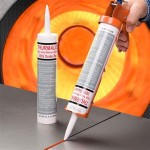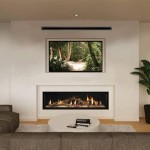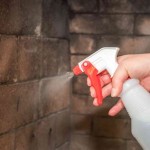Fireplace Insert Not Heating: Troubleshooting and Solutions
A fireplace insert, designed to enhance the efficiency and aesthetics of a traditional fireplace, can experience heating malfunctions. When a fireplace insert fails to produce adequate heat, it negates its intended purpose and can create frustration for the homeowner. Understanding the potential causes and corresponding solutions is crucial for restoring the insert's heating capabilities and maintaining a comfortable living environment.
Diagnosing a heating problem requires a systematic approach, beginning with basic checks and progressively moving to more complex components. Several factors can contribute to a fireplace insert's inability to heat properly, ranging from simple user errors to mechanical failures. This article will explore common reasons why a fireplace insert may not be heating, along with practical troubleshooting steps and potential resolutions.
Fuel Supply Issues
The fuel supply is the primary source of energy for most fireplace inserts, and any disruption to this supply can significantly impact heating performance. The specific fuel type—wood, gas, or pellets—dictates the relevant components and potential problems within the system. Understanding the intricacies of each fuel type is essential for accurate diagnosis and repair.
For wood-burning inserts, the quality and dryness of the wood are paramount. Wet or unseasoned wood contains a high moisture content, which requires significant energy to evaporate before combustion can effectively generate heat. This results in a cooler, smokier fire with reduced heat output. Using properly seasoned hardwood is crucial for efficient burning and optimal heating. Additionally, ensuring adequate airflow within the firebox is vital. Restricted airflow can stifle the fire and prevent it from reaching its maximum heating potential. Proper damper settings and regular cleaning of the firebox and chimney are necessary to maintain optimal airflow.
Gas fireplace inserts rely on a consistent supply of natural gas or propane. A low gas pressure, often resulting from a faulty regulator or insufficient supply from the gas provider, can significantly reduce the flame size and heating capacity. Checking the gas pressure at the appliance and ensuring the gas line is properly sized are important steps. Furthermore, the gas valve itself can malfunction, restricting the flow of gas to the burner. The burner assembly, responsible for mixing gas and air for combustion, can become clogged with debris, leading to an uneven flame and reduced heat output. Regular inspection and cleaning of the burner are necessary to maintain optimal performance. A qualified technician should handle repairs or adjustments to the gas valve and gas lines.
Pellet stove inserts utilize compressed wood pellets as fuel. The auger system, which feeds pellets into the firebox, can malfunction, leading to an inconsistent fuel supply. A jammed auger, often caused by debris or damaged pellets, can restrict the flow of pellets and reduce the fire's intensity. Regularly cleaning the hopper and auger system, and using high-quality, dry pellets, are essential preventative measures. The combustion blower, which provides air for burning the pellets, can also fail, leading to incomplete combustion and reduced heat output. Inspecting the blower motor and impeller for obstructions or damage is important. A faulty igniter, responsible for starting the fire, can prevent the pellets from igniting properly, resulting in a lack of heat. The igniter should be checked for continuity and replaced if necessary.
Airflow Obstructions and Ventilation Issues
Proper airflow is essential for efficient combustion and heat distribution in all types of fireplace inserts. Obstructions within the insert or ventilation system can significantly reduce heating performance and even create safety hazards. Identifying and addressing these obstructions is critical for restoring optimal heat output.
For wood-burning inserts, creosote buildup within the chimney is a common problem. Creosote is a flammable byproduct of incomplete combustion that accumulates on the chimney walls over time. Excessive creosote buildup restricts airflow, reducing the draft and increasing the risk of chimney fires. Regular chimney sweeping, at least annually, is essential to remove creosote and maintain proper ventilation. Additionally, the damper, which controls airflow through the chimney, must be fully open during operation. A partially closed damper restricts airflow and reduces the fire's efficiency.
Gas fireplace inserts, while generally producing less creosote than wood-burning inserts, can still experience airflow problems. The venting system, typically a double-walled pipe, can become blocked with debris or damaged, restricting the flow of exhaust gases. Inspecting the venting system for obstructions and ensuring it is properly sealed is crucial. The air intake vents, which provide fresh air for combustion, can also become blocked with dust or debris, restricting airflow and reducing the burner's efficiency. Regularly cleaning the air intake vents is important. Furthermore, improper venting can lead to the accumulation of carbon monoxide, a deadly odorless gas. A carbon monoxide detector should be installed near the fireplace insert to provide early warning of potential hazards.
Pellet stove inserts rely on both combustion air and exhaust venting for proper operation. The exhaust vent can become clogged with ash and debris, restricting the flow of exhaust gases and reducing the fire's efficiency. Regular cleaning of the exhaust vent is essential. The air intake vent, which provides fresh air for combustion, can also become blocked, leading to incomplete combustion and reduced heat output. Inspecting and cleaning both vents regularly is critical for optimal performance. A blocked or restricted vent can also trigger safety shut-off mechanisms, preventing the insert from operating altogether.
Mechanical and Electrical Component Malfunctions
Fireplace inserts incorporate various mechanical and electrical components that contribute to their heating performance. Malfunctions within these components can disrupt the heating process and require professional diagnosis and repair. Identifying the specific component causing the problem is essential for effective troubleshooting.
The blower motor, responsible for circulating warm air into the room, is a common source of problems. A failing blower motor may produce little or no airflow, resulting in reduced heat distribution. The motor should be inspected for obstructions, tested for continuity, and replaced if necessary. The thermostat, which controls the blower speed and heat output, can also malfunction, leading to inconsistent or inadequate heating. The thermostat should be calibrated properly and replaced if faulty. The wiring connections within the insert can also become loose or corroded, disrupting the electrical flow to various components. Inspecting and tightening all wiring connections is important.
Gas fireplace inserts rely on several specialized components, including the thermocouple, which senses the pilot flame and allows the main burner to function. A faulty thermocouple can prevent the main burner from igniting, resulting in a lack of heat. The thermocouple should be inspected for damage and replaced if necessary. The pilot light assembly itself can become clogged or misaligned, preventing the pilot flame from burning properly. Cleaning and adjusting the pilot light assembly is important. The gas valve, which controls the flow of gas to the burner, can also malfunction, restricting the gas supply and reducing the flame size. A qualified technician should handle repairs or adjustments to the gas valve.
Pellet stove inserts incorporate a control board that regulates the auger, blower, and igniter. A malfunctioning control board can disrupt the entire heating process. The control board should be inspected for damage and replaced if necessary. The auger motor, responsible for feeding pellets into the firebox, can also fail, leading to an inconsistent fuel supply. The auger motor should be tested for continuity and replaced if necessary. The igniter, which starts the fire, can also fail, preventing the pellets from igniting properly. The igniter should be checked for continuity and replaced if necessary. Many pellet stoves have safety switches that will shut down the unit if overheating is detected. These should also be inspected for proper function.
Addressing a fireplace insert that is not heating requires a systematic approach, starting with the most basic checks and moving to more complex troubleshooting. Safety should always be the top priority, and any repairs involving gas or electrical components should be performed by a qualified technician. By understanding the potential causes of heating problems and following the appropriate troubleshooting steps, homeowners can restore their fireplace insert to optimal performance and enjoy a warm and comfortable living environment.

Electric Fireplaces That Don T Give Off Heat Direct

Electric Fireplaces That Don T Give Off Heat Direct

Electric Fireplace Not Blowing Heat

Inefficient Fireplace How To Make Sure Your Is Doing It S Job

The Best Space Heater For Hygge Is Actually A Fake Fireplace Insert Epicurious

Touchstone 50 In W Black No Heat Electric Fireplace The Fireplaces Department At Com

Why Is My Fireplace Not Heating Home Southern Chimney And
Lopi Insert Not Putting Off Heat Hearth Com Forums Home

Why Your Electric Fireplace Stopped Working

5 Common Problems With Electric Fireplaces And How To Fix It Vevor Blog








